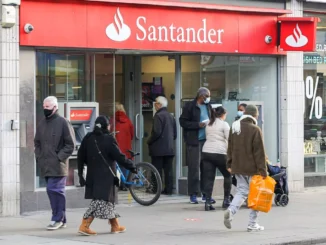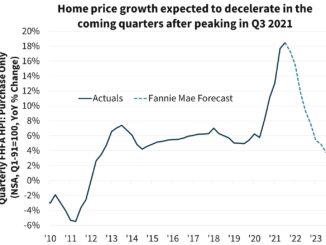
The Federal Reserve Chairman Jerome Powell maintained a hawkish tone during his speech at a press conference on Wednesday afternoon — but it wasn’t hawkish enough to keep optimism from spreading across the markets as mortgage rates dropped closer to 6%.
“Inflation remains well above our longer-run goal of 2% over the 12 months ending in December: total PCE prices rose 5%; excluding the volatile food and energy categories, prices rose 4.4%,” Powell told journalists.
“While recent developments are encouraging, we need substantially more evidence to be confident that inflation is on a sustained downward path,” he added.
According to Powell, Fed officials have decided to shift the rate hikes to a slower pace to better assess the economy’s progress. On Wednesday, the Federal Open Market Committee (FOMC) raised the federal funds rate by 25 basis points to the 4.50%-4.75% range. However, the Committee also anticipates that ongoing increases in the target range will be appropriate to bring inflation back to 2%.
All the markets heard, though, is that a disinflation process is in progress — or, in other words, inflation growth is slower. When the closing bell rang on Wednesday, the S&P 500 was up 1.05% and the tech-heavy Nasdaq rose 2% compared to the previous close. The yield curve also dropped, with the 10-year Treasury note down 13 basis points to 3.39%.
In turn, mortgage rates started a free fall. The latest Freddie Mac index measured the 30-year fixed-rate mortgage at 6.09% as of Thursday, down four basis points compared to the previous week. The rate was even lower at Mortgage News Daily, at 6.04% on Thursday, down 13 basis points from the previous closing.
“Mortgage rates inched down again, with the 30-year fixed-rate down nearly a full point from November, when it peaked at just over 7%,” Sam Khater, Freddie Mac’s chief economist, said in a statement.
“According to Freddie Mac research, the 100 basis points reduction in mortgage rates since November can allow as many as 3 million more mortgage-ready consumers to qualify and afford a $400,000 loan, which is the median home price,” he added.
Is the market overreacting?
The bond market clearly disagrees with Powell’s aggressive talk, according to Logan Mohtashami, lead analyst for HousingWire.
“The market is correct, as the inflation growth rate has been falling, and the Core PCE looks like it will have a 3% handle by the end of the year,” Mohtashami said. “Powell and the Fed have been talking tough for months now, but the growth rate of inflation has been falling, even when the labor market has stayed firm.”
Mohtashami expects that spreads between the 10-year Treasury note and the 30-year fixed-rate mortgages will get even better, and mortgage rates will fall to the 5% level soon.
At Goldman Sachs, the team of analysts said that February’s FOMC meeting sent a message that the disinflationary process is now underway.
However, there is more work to do as the Committee left unchanged the sentence in its statement that says that “ongoing” rate hikes will be appropriate, “a modest hawkish surprise to our expectation that it would tone down this language,” the analysts wrote.
Goldman Sachs’s team forecasts two more 25 basis points hikes to the federal funds rate in March and May. According to Sachs, “the FOMC aims to avoid recession but keep growth below trend in order to further soften labor market conditions, consistent with our forecast.”



